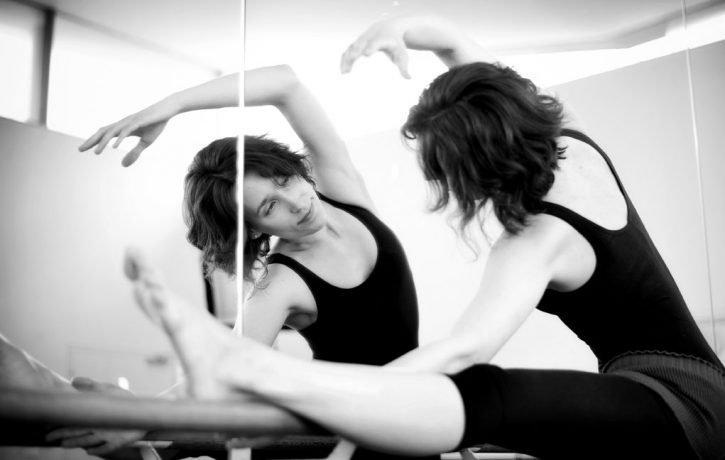Pilates Principles 5 and 6: Breath and Flow

The students of Joseph Pilates formed 6 principles that should be at the basis of all Pilates practice: Centering, Concentration, Control, Precision, Breath, and Flow.
It is a fact that we breathe. I know that many of my clients are unsure about how they “should” breathe. They may have found that in some Yoga and Pilates classes they have been told to breathe in very different ways and at different times during the exercises.
The thing is, you breathe well already. If you did not, you would not be alive. Of course, there are many different ways of how we can breathe. Sometimes it is a good idea to become aware of how you breathe and make a change to it deliberately to promote, for example, calming your nervous system, aid digestion or to accompany a particular movement in a supportive or protective way. Therefore it is great to be a bit more aware of your breath first of all. Where does your breath go inside you? What is its pace and does it match your out-breath? Being aware and flexible in how you breathe can be a great advantage, especially if you are a shallow breather or over-inhaler. In Yoga and Pilates, we promote breathing by reminding you of it and sometimes suggesting you breathe in or out at particular points during the exercises. The reasons we do this first of all is because breath is important and we tend to forget to breathe when we are focused on a complex movement or stuck in a challenge. So breathe! It almost always good advice. If you don’t know what to do, just breathe. It can really help, as simple as it seems. Breathing has a huge impact on your mental state and breathing also has a huge impact on your movement ability. If you hold your breath or breathe shallowly your movements will reflect this. So for me, the most important thing is that you keep breathing in a way that feels supportive to you. Biomechanically there are many good reasons why we would suggest breathing in or out at particular times during a movement. However sometimes it depends on the individual and sometimes it depends on the purpose of the exercise, which way around we might suggest the breath. That is why it can be contradictive. There is definitely no one rule for breath. Breath is a tool, not a rule.
See my little video on breathing here:
https://www.facebook.com/KristinLoeerMovementTherapy/videos/616082611913303/
With relaxed, healthy breathing comes flowing movements. If we stop and go, second-guess and hold our breath our movements will also stop and start, be insecure and tense, which will have an impact on our movement quality.
We spend so much time in Pilates, centering our mind on the movements and on controlling them, that it can be the toughest challenge to bring flow back to our exercises without losing the quality we built. However, it is important to finally let go to allow flow. Flow is what we need when we walk and when we move around in our everyday life. Flow is the proof that we have a good level of balance and coordination and are confident with the high-quality movements we perform. This is important for our everyday physical function, which can be complex and often is performed while our brain is busy with other things. If we can do this we minimise risks of falling over when we are older and maintain an ability to multitask and move safely and effortlessly throughout life.
If you would like to experience Pilates in a 1-1 session or as a group class contact Kristin at The Body Matters on 01702 714968.
- The Thing About Mixed Feelings Is… - 4th June 2023
- Overthinkers – Here Is What You Really Need To Know - 28th April 2023
- Why Emotions Can Be Overwhelming - 13th December 2022
